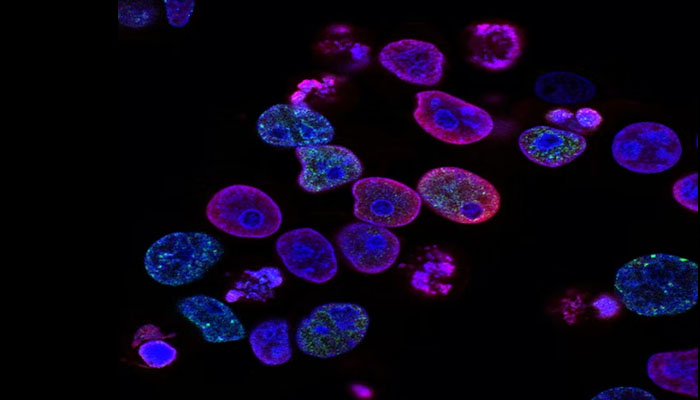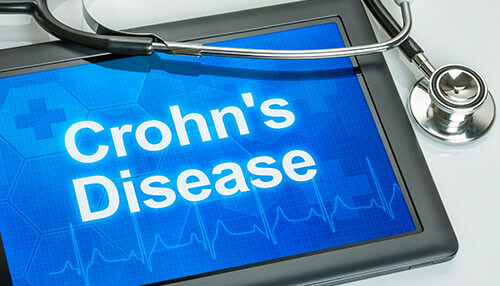Crohn’s disease (CD) is a kind of inflammatory bowel disease (IBD) in which the affected individual experiences gastrointestinal inflammation and abnormalities of the mucosal-associated immune system. In this condition, the immune system initiates attacks on the intestines, thus resulting in swelling, stomach pain, and diarrhea.
Unfortunately, the existing treatment for the disease is not always 100 percent successful. In fact, research shows that about half of patients with CD relapse within the first year of treatment, in addition to the side effects associated with prescribed medications.
Therefore, medical practitioners have been exploring distinct ways to prevent attacks by the immune system and heal the damage to the intestines caused by the condition. One of the most effective ways is stem cell therapy, which uses the regenerative and immunomodulatory properties of stem cells to repair damaged cells, regulate the immune system, and minimize inflammation.
What are the current treatments for Crohn’s disease?
CD is a chronic condition that affects more than a million people in the United States alone. However, it is difficult to manage, and the current medical treatment for Crohn’s disease mostly aims to reduce inflammation that activates the condition’s symptoms. Another treatment method limits the complications to ensure improvement in the disease’s long-term prognosis. The known cures for Crohn’s disease include the following:
1. Anti-Inflammatory Drugs
The use of anti-inflammatory drugs is often the first step in the treatment of inflammatory bowel disease. Corticosteroids, such as prednisone and budesonide, are prescribed to the patient to reduce inflammation. Unfortunately, these are not effective for all patients with CD.
2. Immune System Suppressors
Immune system suppressors are also used to reduce inflammation by targeting the immune system, which is the primary cause of inflammation. A combination of these drugs is prescribed to some patients with CD who do not respond well to a single drug. Azathioprine (Azasan, Imuran) and mercaptopurine (Purinethol, Purixan) are usually recommended, but CD patients who do not respond well to other medicines are prescribed methotrexate (Trexall).
3. Biologics Therapies
Biologics are medicines made from living organisms to neutralize the proteins created by the immune system. For CD, Vedolizumab (Entyvio) is used to prevent specific immune cell molecules from binding to other cells in the intestinal lining. TNF inhibitors such as infliximab (Remicade), adalimumab (Humira), and certolizumab pegol (Cimzia) are also used for CD. Another biologic therapy used for CD treatment is ustekinumab (Stelara), which works by intruding on the action of interleukin, a protein that plays a role in inflammation.
4. Antibiotics
The symptoms of CD are also minimized through the prescription of antibiotics. These drugs are used to minimize the number of destructive bacteria causing inflammation in the intestines. Ciprofloxacin (Cipro) and metronidazole (Flagyl) are usually recommended for CD treatment.
5. Nutrition Therapies
Improving the overall nutrition in the body provides rest to the bowel to reduce short-term inflammation. Often, nutrition therapies are combined with prescription drugs to give the most relief. This technique is also used to get the patient healthy enough before surgery or when other medicines cannot mitigate the symptoms. A low-fiber diet is advised to limit the risk of intestinal stricture and relieve symptoms.
6. Surgeries
Surgery is considered the last resort for CD treatment and is only recommended when drugs and other therapies do not work. The procedure involves removing the damaged part of the digestive tract and reconnecting the healthy components. The practice may also be used to close fistulas and drain abscesses, which are complications of Crohn’s disease. However, even surgical procedures are not always effective in curing the condition.
The effectiveness and adverse reactions of the drugs
Wondering how many people die of Crohn’s disease? The answer is 25–40% of all patients. This is because the treatments for Crohn’s disease often fail.
As well, the ingestion of medications for Crohn’s disease comes with numerous side effects, causing additional distress for the patients. For example, the common adverse reactions of corticosteroids include glaucoma, swelling, elevated blood pressure, weight gain, risk of infection, acne, and mood fluctuations. Similarly, anti-inflammatory drugs and immune system suppressors may cause nausea, vomiting, heartburn, diarrhea, headache, and fever.
The use of antibiotics can also result in some side effects, including abdominal pain, diarrhea, indigestion, appetite loss, nausea, neuropathy, and sensitivity to sunlight. On the other hand, the side effects of biologics may induce headaches, fever, chills, and decreased blood pressure.
Surgical procedures are also not entirely successful in the treatment of CD. In fact, the primary objective is to provide temporary relief in case the medication is not effective.
At this point of the article, we have come to discuss a new method of treating the disease—stem cell therapy, which promises persistent relief of symptoms, slowing the progression of the disease, and prevention of relapses with excellent tolerability of therapy.
What is the action of stem cells in treating Crohn’s disease?
Therapy based on stem cells (SCs) is a method of regenerative medicine that has the power to repair dysfunctional and damaged tissues. Cell-based transplants are effective in treating CD, according to research and clinical trials, for two reasons:
1. SCs have immunomodulatory properties. First, they release chemicals that reduce inflammation and repair the intestinal lining. They also revive the immune system by creating new and healthy white blood cells.
2. SCs promote tissue regeneration. They can either divide by themselves and thus replace damaged cells or stimulate the proliferation of local cells.
In what ways are stem cells delivered?
For the therapy, two types of stem cells for Crohn’s disease are used. These may be extracted from the patient’s body or from an external donor. The drug based on SCs is transfused into the patient’s body in two ways:
1. Local stem cell injections are provided to direct the cells to the damaged area.
2. The intravenous infusion of stem cell transplants provides a systemic effect on the body.
Within the body, the drug works on replacing diseased cells with healthy ones, decreasing inflammation, and stimulating tissue recovery. This results in further improvement of the condition, including:
- pain relief
- elimination of abdominal discomfort
- resolved stool issues
- increased energy level
- improved mood and sleep
Are there any side effects?
Like all treatments, the procedure of stem cell introduction also may have certain side effects. Mild symptoms include headaches and fever. However, they pass in a short time and do not have a significant impact on health.
Is stem cell therapy effective, and what are the outcomes for Crohn’s disease?
Stem cell therapy is considered revolutionary in treating CD. However, it still needs to be researched before becoming a regular treatment. Scientists need to learn more about the most effective types of SCs for CD, the number of cells to use, the most effective delivery methods, and the frequency of treatment.
Clinical trials and research
Several clinical trials and research have been conducted to study the impact of stem cell therapy on CD. An evaluation of 46 studies investigating the effectiveness of this method for Crohn’s disease in humans and animals showed a high remission rate in patients for 3-34 months after transplantation.
Another research proved that this kind of therapy effectively induces remission in refractory Crohn’s colitis and perianal fistula. However, further research is required to learn more about the delivery methods and clinical practices.
Wrapping Up
Stem cell treatment is considered a breakthrough medical approach, as it reduces inflammations and replaces unhealthy and damaged cells with new and healthy units. In addition, this method allows avoiding the side effects of conventional medications that decrease the quality of life.
Currently, there are several clinics in the world offering stem cell therapy for Crohn’s disease. However, it is rather expensive and still not for mainstream implementation because not all patients can afford this treatment, and not all doctors can perform this therapy.



